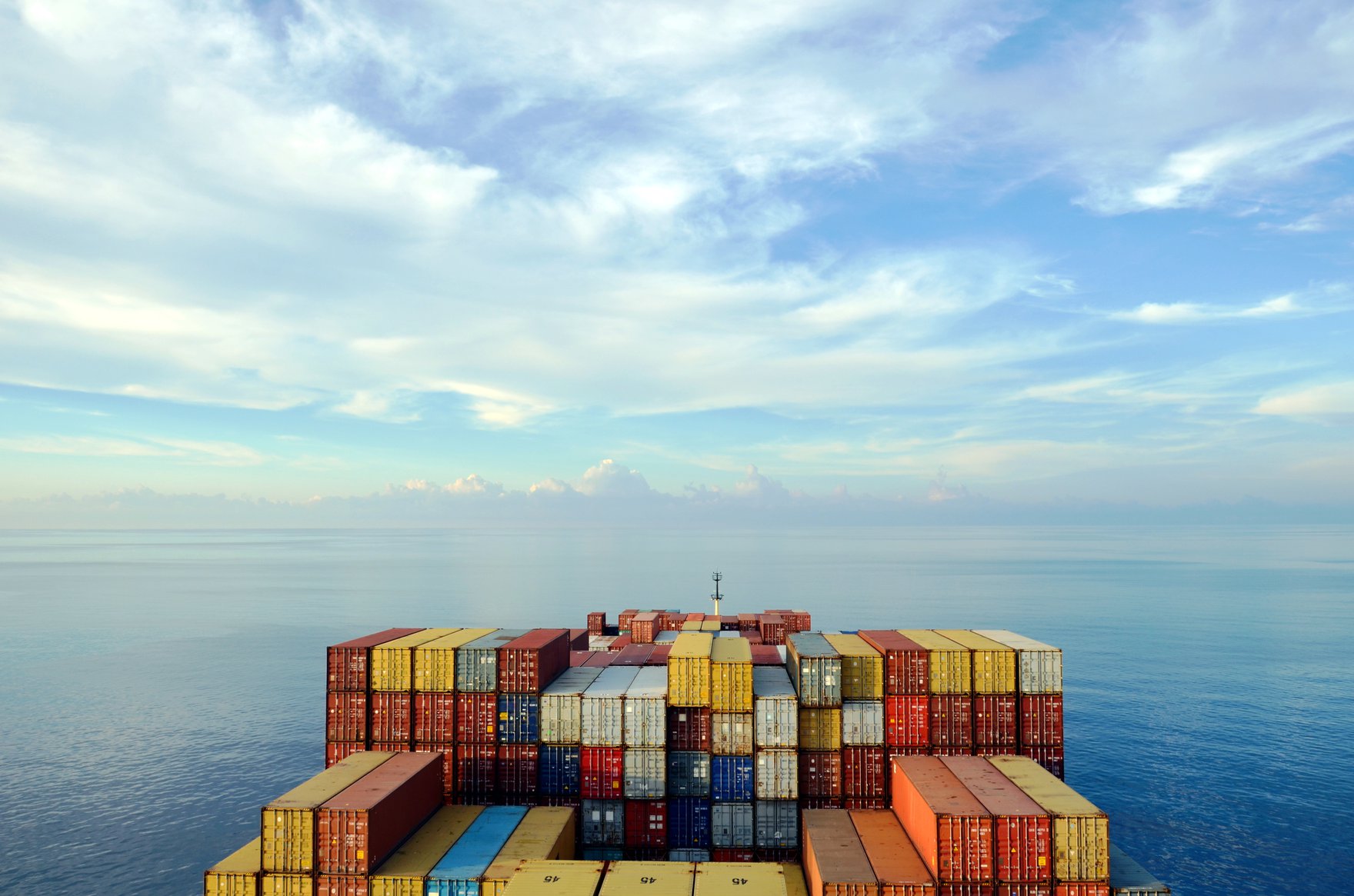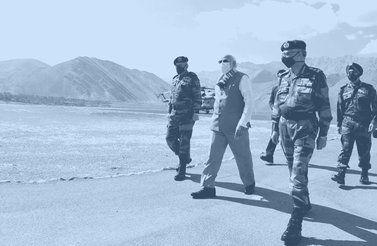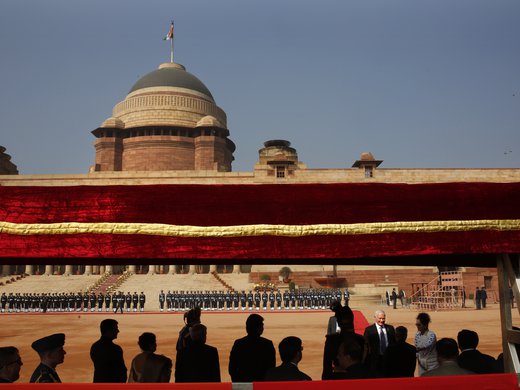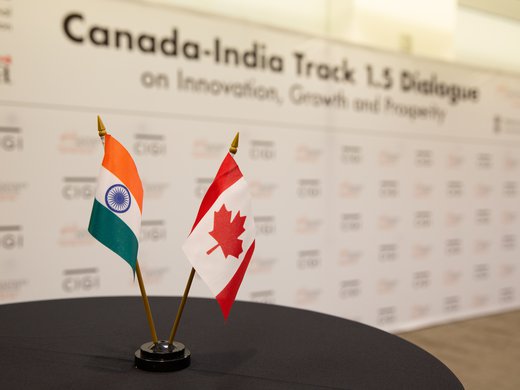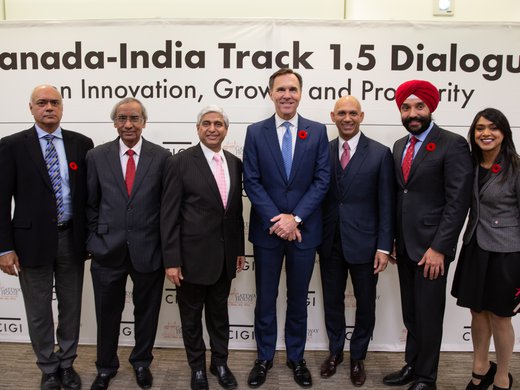On November 17, 2020, CIGI senior fellow Dan Ciuriak addressed experts and government officials at the third meeting of the Canada-India Track 1.5 Dialogue on Innovation, Growth and Prosperity. The meeting explored Canada-India bilateral relations and multilateral initiatives in the context of COVID-19, with a focus on the new geo-economics of the Indo-Pacific region, and digital cooperation in the areas of fintech and artificial intelligence. The following is a lightly edited version of his remarks.
The Indo-Pacific has become a prominent frame of reference for geopolitical and geo-economic issues in recent years, increasingly displacing the Asia-Pacific in strategic discussions. However, what the Indo-Pacific means in geographic terms has not been settled, and what it means in policy terms varies from one interested party to the next. As Allan Gyngell wrote in a 2018 article: “The Indo-Pacific is a framing device, not a geographical reality — its proponents shape it around their different interests. Each country has its own ‘Indo-Pacific’.”
Its early consideration as a conceptual framing appears to have been inspired by growing transportation infrastructure networks linking the western Pacific and the Indian Ocean and the growing trade along these corridors; see, for example, “Australia in the Asian Century,” a white paper issued by the Australian Government in 2012. Rivals for the framing included the “trans-Asian” concept mentioned in this white paper, as well as the “broader Asia” concept floated by Japanese Prime Minister Shinzo Abe in an address to the Parliament of India in 2007.
It is hardly surprising to see the Indo-Pacific concept taking prominent root early in Australia, given that its western shore faces the Indian Ocean and its eastern shore the Pacific. Moreover, given the penning of the white paper by the Kevin Rudd-Julia Gillard government, which saw Australia’s future prosperity as tied up with Asia’s economic growth engine, the references to China in this white paper are positive, calling for “China’s participation in the region’s strategic, political and economic development” while emphasizing Australia’s need to extend its bilateral architecture in both directions, “with China and India being immediate priorities.”
The other major player with a similar geographic interest is the Association of Southeast Asian Nations (ASEAN). Like Australia, ASEAN’s membership forms part of the littoral of both oceans. ASEAN was not quick to warm to the term Indo-Pacific, however. Notably, the ASEAN-led launch of negotiations toward a Regional Comprehensive Economic Partnership (RCEP) in 2013, which included both India and the Northeast Asian economies along with ASEAN, was not framed as an Indo-Pacific initiative, notwithstanding that it was by far the most direct way of concretizing that concept in economic terms. In 2013, Indonesian Foreign Minister Marty Natalegawa put out a trial balloon in a speech in Washington, DC, calling for an “Indo-Pacific-wide treaty of friendship and cooperation.” In an op-ed for The Jakarta Post, Rizal Sukma emphasizes Natalegawa’s concern about maintaining “dynamic equilibrium,” while preserving the central role of ASEAN in the region’s security architecture, which includes the ASEAN Regional Forum (ARF), the post-ministerial conference and the East Asia summit.
The Indo-Pacific is a framing device, not a geographical reality — its proponents shape it around their different interests. Each country has its own ‘Indo-Pacific’.
Alongside the economics-driven rationale for this framing, there was an omnipresent geopolitical element in the Indo-Pacific framing, whether as text or subtext. This too is hardly surprising: the US “pivot to Asia” was a signature foreign policy move under the Obama administration in 2009. The “pivot” featured trade (Trans-Pacific Partnership) and military (Air-Sea Battle doctrine) components, both aimed at containing China. This latent or veiled conflict invoked by the geopolitical element in the Indo-Pacific framing came out into the open with the Trump administration’s promotion of the “free and open Indo-Pacific” in the 2017 US National Security Strategy. Hardly surprisingly, China reacted negatively, with Foreign Minister Wang Yi calling the Indo-Pacific framing an “attention-grabbing idea” that “will dissipate like ocean foam.”
A number of Indo-Pacific strategies have been crafted by countries within and outside the region. Some show clear and deliberate alignment, such as, India’s “Act East” and Japan’s “Free and Open Indo-Pacific” strategies. Others avoid alignment; ASEAN, at its thirty-fourth Summit in Bangkok in 2019, concerned that it would be left out of the new geostrategic game, put out its own vision for the Indo-Pacific, “ASEAN Outlook on the Indo-Pacific,” which emphasized ASEAN centrality amid the competing major powers.
Picking up on this tension, the Asia Pacific Foundation of Canada drew a conceptual distinction between an Indo-Pacific vision based on “diversification, inclusion, and stability,” as framed by “adapter states” (e.g., ASEAN) and the confrontational “‘free’ and ‘open’ Indo-Pacific (FOIP)” vision advanced by the “proponent states,” namely, Australia, Japan, India and the United States.
Connected with the question of the characterization of the Indo-Pacific is the issue of its geographical definition. Maps play an important role in strategic thinking about this region. The 2017 US National Security Strategy defines the Indo-Pacific as extending “from the west coast of India to the western shores of the United States.” However, Robert D. Kaplan, the author of The Revenge of Geography: What the Map Tells Us About Coming Conflicts and the Battle Against Fate, has advocated that the United States take a wider view of the Indo-Pacific, as “one maritime Eurasian rimland, stretching from the Horn of Africa all the way up to the Sea of Japan. So the United States has to stop thinking of this vast area of Eurasia as divided into separate parts and instead recognize how energy interconnects the resources of the Middle East and the consumers in Asia. Put differently, the Indian Ocean is the world’s energy interstate. The United States should therefore understand the interconnectivity of the Eurasian maritime rimland and develop strategies accordingly.”
Gyngell, looking at the region from an Australian perspective, has a similar map in mind: “It is best understood as a maritime counterpart (and in some eyes a counterweight) to the shifting forces across continental Eurasia. It encompasses the energy supplies, production chains, infrastructure and security connections — both state and non-state — that link the Middle East, West Asia and East Asia. It also incorporates US security and economic connections across the Pacific.”
Meanwhile, France — as Frédéric Grare, a senior fellow at the Carnegie Endowment for International Peace, recently wrote — sees the region more self-interestedly, as it “aims to protect the country’s international position and its specific interests — notably, in the overseas territories that anchor and give credibility to the French strategy … which include New Caledonia, French Polynesia, Wallis and Futuna, and Clipperton Island — as well as Reunion Island, Mayotte, and the French Southern and Antarctic Lands. For France, they collectively make up the second most important exclusive economic zone in the world.”
Germany, which, unlike France, has no remnants of a colonial presence, has tabled an Indo-Pacific strategy (perhaps better characterized as “guidelines”) that illustrates the challenge for non-regional players. It signals general interest in trade relations with ASEAN and India as a diversification play, and manages to annoy China with the Indo-Pacific framing without meaningfully impacting on the balancing game because Germany lacks force projection capability in the Indo-Pacific. It is not really clear what Berlin was trying to achieve. The German approach amounts to the seemingly unwise combination of talking copiously but cautiously while carrying a small stick. Nonetheless, Grare reads symbolic meaning into it: “Whatever Berlin’s actual intentions, the value of the document on the Indo-Pacific is to some extent connected more to its existence more than in its content. Germany is only the second country in Europe to have produced a blueprint for engagement with the region.”
As a cautionary tale for other extra-regional players, the German strategy is, from an Indian perspective, underwhelming and unfocussed. As Gurjit Singh, the former Indian ambassador to Germany, recently wrote:
India is mentioned 57 times, in the IP [Indo-Pacific] document, and ASEAN 66 times. Foreign Minister Heiko Maas at the press briefing on the policy said that the Himalayas and Malacca are far away but remain important. Diversification is the main theme of the policy, but seems more intended to woo ASEAN than India or Japan. Vietnam, China and South Korea are its main trade targets. Free Trade Agreements (FTAs) with Australia and Indonesia are also mentioned. The EU Japan Sustainable Infrastructure Partnership of September 2019 is seen as an alternative to BRI, however, Germany’s own role on this again remains unclear.
To summarize, the Indo-Pacific is a contested and conflicted framing, a hot potato with unclear geopolitical and geo-economic meaning. We look next to the economics for help in deciphering.
The Value Proposition Underpinning the Indo-Pacific Framing
Ultimately, the exercise of both geopolitical and geo-economic tools must be driven by significant value propositions if the use of those tools is to have more than ephemeral effect. In previous work, I’ve argued that the contours of the conflicts that characterize an age, both internal and between states, can be seen as broadly aligned with the contest over economic rents. What, then, is the source of economic value that is the bone of contention driving the polarization around the Indo-Pacific framing?
Geopolitics
Seen through the lens of security, the most prominent concrete manifestation of the Indo-Pacific framing is, arguably, naval cooperation in the revived Malabar exercises involving the Quadrilateral Security Dialogue (Quad) countries (Australia, India, Japan and the United States). This grouping anticipates the concept of a coalition of democracies. Thus, to quote Gyngell again, the Australian white paper “commits the Australian government to “engage with ‘major Indo-Pacific democracies’, including by working ‘in small groups, to promote … a balance in the region favourable to our interests’.”
However, the practical impact of this is unclear — at many levels.
First, economics does not align along a democracy-authoritarianism axis. Since the 2000s, it has been made abundantly clear that it is firms that trade, not states — and firms follow profit signals. At the same time, in a world where major firms tend to become national champions, whose cause is supported by the state internationally, politics tends to cleave toward the economics, which is non-aligned. Thus, we should not be surprised at Gyngell’s perspective that “the Quads have a richer and more active life in the pages of academic journals and blogs than they do in practice. The four countries maintain very different interests, which place limits on the group’s capacity to move much beyond policy generalities.”
Second, the Indo-Pacific framing as one of the sea lanes connecting the West to the East is not of the modern world; it has a distinct nineteenth century, even pre-modern mercantile feel, redolent of an age when dominance of the sea lanes and ports was the way to capture economic rents, when the spices from Southeast Asia were worth their weight in gold, and when the choke points of the Strait of Malacca and the Suez were ever-present dangers to shipping. But those days are long gone: with the notable exception of oil, the goods trade that goes by freighter these days captures little rent. Most products have razor-thin margins and face intense competition worldwide, thanks to the globalization of production under the rules-based system of the World Trade Organization. This is a high-volume, low-margin business that is not suited for geo-economic power plays. Moreover, the two-way trade across the Indian Ocean and onward is vital to the economic health of all the economies in both the East and the West. Since trade is mutually beneficial, any move to blockade China’s trade would hurt its partners (including in Africa, Europe and the Middle East) as much as it hurts China. This is not a good way to win friends and influence people. The value proposition lies in keeping the sea lanes open and transit efficient and safe (accidents do happen, and there is some residual threat of small-scale piracy), not in interdiction of this trade to make some hypothesized geopolitical hay.
There is, of course, the exception of oil and other resources, which looms large, given the American conception of the Indo-Pacific as the energy interstate highway. The orientation of US foreign policy around oil is, however, very twentieth-century, crafted for an age when oil was the “black gold” and the oil-rich states consequently became battlegrounds. But that is not where the rents are today. The cost of renewables has fallen below that of coal and there is a climate change imperative — underscored by escalating natural disasters and the threat of a collapsing biosphere — to eliminate further net greenhouse gas emissions. To be sure, maintaining the flow of oil from the Middle East and mineral resources from Africa to China is critical for China’s economy, and China thus has a genuine security interest in countering the possibility of a US-led blockade (hence the obvious Belt and Road Initiative [BRI] infrastructure thrusts to create options for goods transit to defeat such plays). But the main point is that there is no obvious point to such a blockade. It’s the twenty-first century: technological advance is transforming the economy into a data-driven economy, and there is no longer a serious value proposition to twentieth-century resource-rent wars.
Geo-economics
Geo-economics can be thought of as the use of economic power either to achieve political objectives or influence across a variety of domains, or for the capture of international economic rents by establishing rules or standards favourable to a country’s interests, by providing bargaining leverage in negotiations, and so forth. The capabilities that confer “economic power” appear to be principally the following:
- size of domestic market, denial of which can force other countries to align with desired policies;
- provision of an international currency, which provides influence over international financial transactions that can be used for coercive objectives;
- ability to deny access to critical technology, which can cripple opponents; and
- convening power, that is, the organization of international clubs and institutions that create dependencies, which can be leveraged and even weaponized.
The United States in the postwar period possessed all of these assets; China for the most part did not, and the same is true of India.
As regards China, it has made major strides in acquiring the tools of economic power. In particular, its domestic market is now crucial for many firms and economies, and China has not been shy in weaponizing that dependence in tit-for-tat responses to what it perceives as hostile actions (notably, the trade response to Australia). As well, it is using its financial resources to at least mimic convening power with initiatives such as the BRI, the Asian Infrastructure Investment Bank, and the China International Commercial Court, and is contributing much of the value of the new liberalization to the ASEAN-led RCEP.
However, China’s currency remains little used for international transactions apart from direct trade with China itself, notwithstanding efforts to internationalize the renminbi through, for example, dim sum bonds — although the introduction of the digital yuan, formally known as the Digital Currency Electronic Payment, is thought by some as potentially game-changing. Moreover, China does not yet have the power to bring other countries to heel on the basis of denial of critical technology.
Seen through the lens of geo-economics, the most prominent elements in the Indo-Pacific framing appear to be a US-led push to reduce reliance on China by Indo-Pacific democracies. That effort relies principally on the US exercise of its convening power, leveraging the supply-chain risks highlighted by the economic shock brought on by the coronavirus disease 2019 pandemic — in combination with a concerted competitive counter to China’s BRI in developing the maritime and digital infrastructure of the Indo-Pacific region.
Supply-chain Relocation
The disruptions arising from the pandemic brought into sharp focus the risk of supply-chain disruption in extended global value chains, and led businesses to focus on the robustness of their supply chains. Much of the early focus of supply-chain relocation was on China, given its major role in global value chains and its being the first economy to experience a major shutdown of economic activity to bring the pandemic under control. The pandemic-related consideration of supply-chain relocation out of China came on top of other factors driving firms in the same direction, including the imposition of punitive tariffs on US imports from China in the context of the US-China trade war, rising Chinese labour costs, and the new opportunities offered by the Comprehensive and Progressive Agreement for Trans-Pacific Partnership (CPTPP). While Southeast Asia appears to be the prime destination for such relocated production, India also has been chosen by manufacturers (such as Wistron and Pegatron, which manufacture components for iPhones). For its part, India has announced a US$6.6 billion subsidy program to attract manufacturing away from China.
Diversification away from China, however, is not simple. There is both the issue of economic scale and the complexity of supply chains. For complex products, a company may have hundreds of first-tier suppliers who, in turn, depend on a still larger group of second-tier suppliers and third-tier suppliers; the cost of actually finding and establishing relationships with new suppliers is thus non-trivial. Moreover, it is one thing to take a factory out of China; it is another to replicate the supporting supply web. If a significant portion of the supply web remains in China, supply-chain risk is not mitigated. Nintendo ran into this problem when production of its consoles in Vietnam (which had moved from China in 2019) was interrupted because of a lack of key components from China. China and India have rather different trade specializations, with a significant overlap only in the harmonized system codes from about Chapter 50 through 70 — principally, textiles and clothing products. This suggests that the supporting supply chains within each country are very different from each other.
It is one thing to take a factory out of China; it is another to replicate the supporting supply web. If a significant portion of the supply web remains in China, supply-chain risk is not mitigated.
Further, trade and the organization of global value chains are dominated by large firms. The Indo-Pacific, at the firm level, is overweighted to Northeast Asia. Consider the Fortune 500 for 2020: China (126), Japan (52), Korea (14) and Taiwan, Province of China (9) dominate the Asian share of Fortune 500 firms. ASEAN (4) and India (7) are underweighted. Simply for reasons of proximity — an advantage now boosted by the signing of the RCEP, which simplifies the rules of origin across East Asia — Northeast Asia will remain tightly integrated through supply chains organized by these firms. India’s decision to stay outside the RCEP and to rely on its individual trade agreements with ASEAN, Japan and others in the region, with differing rules of origin, undermines its competitive proposition for supply-chain linkages and, by extension, for the concept of the Indo-Pacific as an organizing principle for regional supply chains — although the sheer weight of numbers of Fortune 500 firms largely predetermined the outcome in any event.
Finally, the larger problem with the idea of the pandemic as a motivating factor for supply-chain relocation is that a general catastrophic event creates risk across many dimensions and multiple regions. As the pandemic rolled around the globe, first to Europe, then to the United States, and eventually across the developing world, including India, economic disruption followed. Meanwhile, the Chinese economy was the first to rebound to, essentially, full operation. Economic analysis shows that reshoring increases the exposure of countries to economic shocks, while relying on trade decreases their risk. Thus, while individual firms will make adjustments to diversify their supply chains to increase robustness, with some of this relocation benefiting India, these moves are unlikely to follow political lines, and, most likely, the firms that take advantage of subsidies are those that would have had good reason to make such moves without the subsidies or the geopolitical or geo-economic calculus. Anecdotal evidence suggests that businesses are not validating a politically motivated push to cut China out of supply chains; indeed, foreign direct investment into China has held up in 2020, even as it has plummeted worldwide.
Replacing China in the Indo-Pacific Infrastructure Build-Out
Replacing China in the infrastructure program of the BRI is both expensive and, in some sense, almost perverse. The BRI, seen in geopolitical and geo-economic terms, is China’s tactical move to counter the China containment (or constrainment) policies initiated by the United States in its pivot to Asia and developed through mechanisms such as “the Quad.” Accordingly, China has a political motivation to spend a very large sum of money for this purpose. The same cannot be said for the United States. Moreover, having the West replace China in developing the infrastructure that China identified as necessary to China’s geopolitical needs seems hardly strategic. Meanwhile, the main interest of third parties in the BRI is to capture some of the economic activity — but this requires partnering with China, rather than working to exclude it.
There is one general exception to this reasoning, and that concerns the undersea cables that will digitally link the Indo-Pacific region internally and to points beyond. Insofar as who lays the cable determines who has the backdoors and captures the data, this aspect of the BRI — the digital Silk Road — is likely to be fiercely contested, with the build-out aligning along political (rather than economic) lines.
Canada and the Indo-Pacific
For Canada, the Indo-Pacific can serve as a useful framing for trade policy going forward, notwithstanding the issues outlined above. However, it is important how Canada uses this concept. In particular, the most prominent possibility for a trade diversification agreement at this time is ASEAN. As noted, ASEAN geographically links the Indian and Pacific Oceans and is the linchpin for the RCEP. Importantly, ASEAN prefers an inclusive reading for the Indo-Pacific concept.
For Canada-India bilateral relations, the emphasis should be on the boundless opportunities to collaborate in developing the data-driven economy. This is where future economic rents are likely to be found and where collaboration can help both economies to scale firms and drive cutting-edge technologies in the domains of big data, machine learning and artificial intelligence. In this regard, map studies are optional, since there are no oceans or littorals in cyberspace. However, insofar as the Indo-Pacific framing is used, the technology play – which is all about connectivity – naturally emphasizes the inclusive meaning of this concept as well.
The more hawkish “‘free’ and ‘open’ Indo-Pacific” concept seems ill-advised, both because Canada is not in a position to back up a hawkish posture, a reality that would make Canada’s pronouncements ring hollow, and because the hawkish conception is itself ill-conceived: in particular, insofar as there is no payoff in terms of rent capture, geopolitical and geo-economic strategies will prove unsustainable, incurring political costs for no gain. Notably, the inclusive framing is the one advocated by the Asia Pacific Foundation of Canada.
